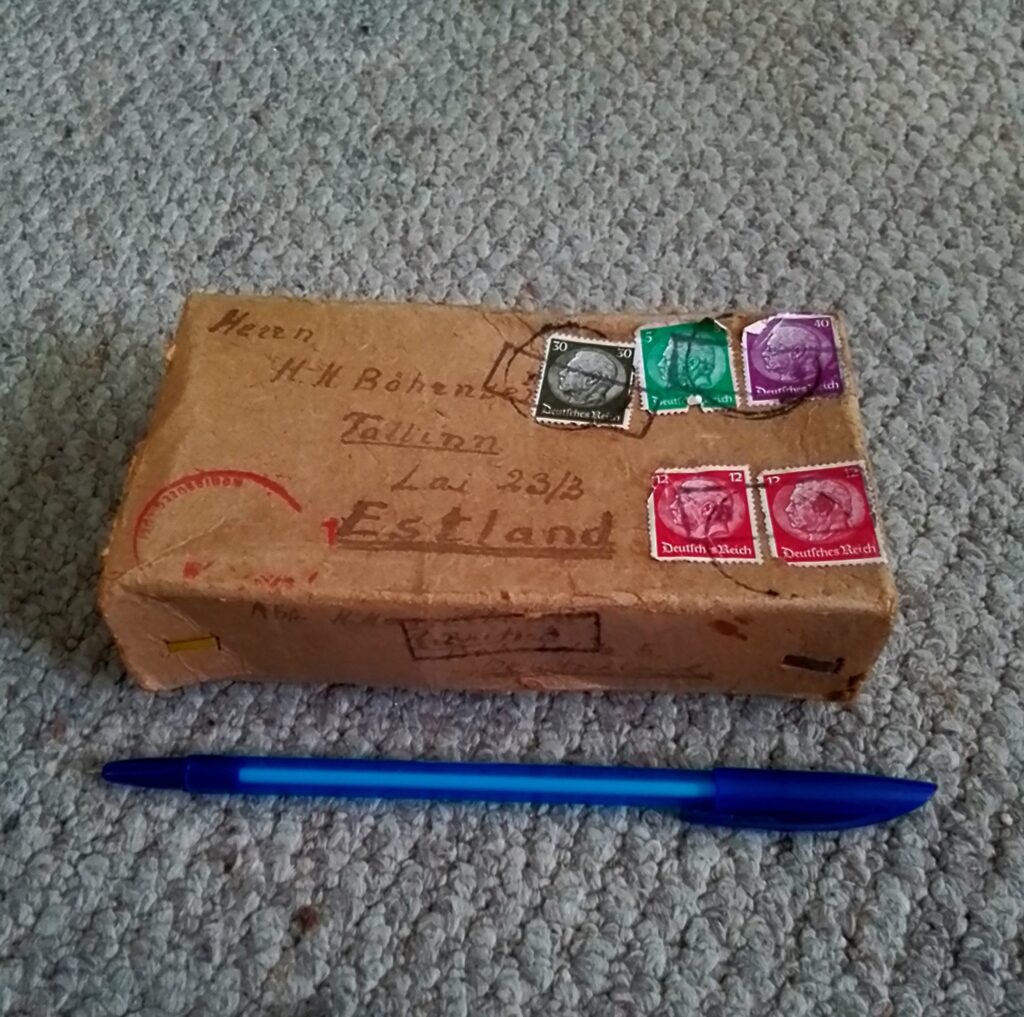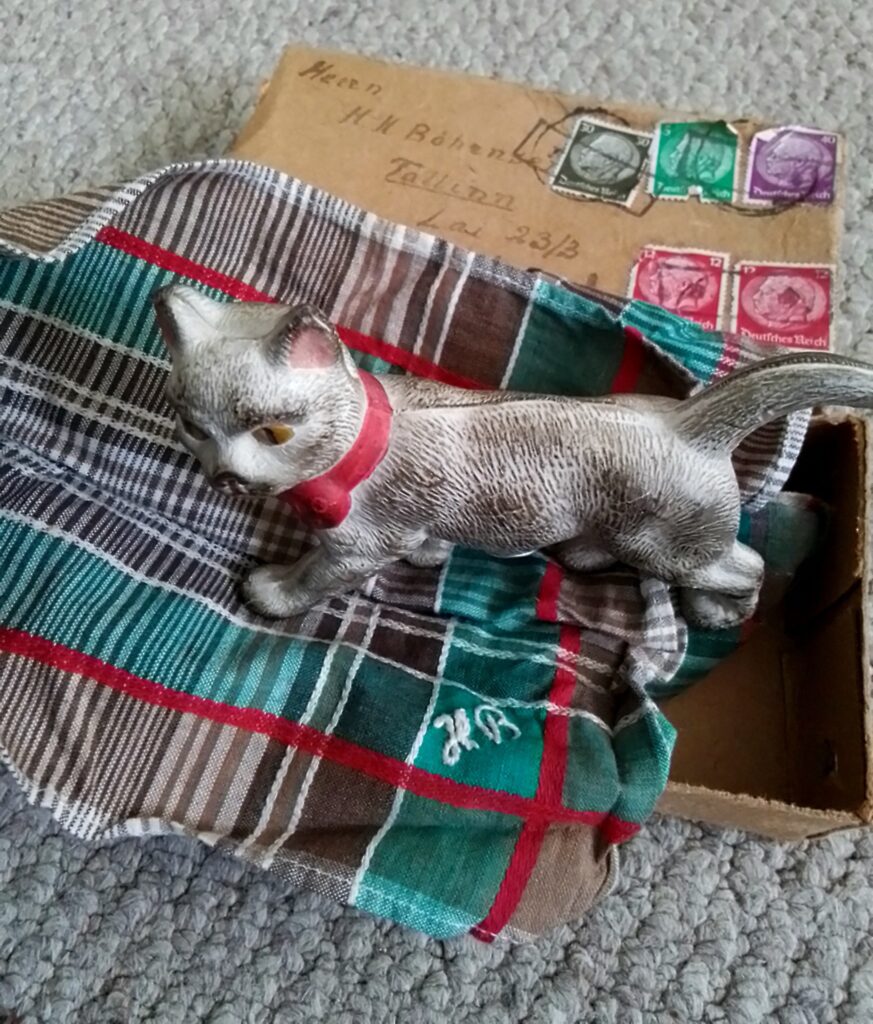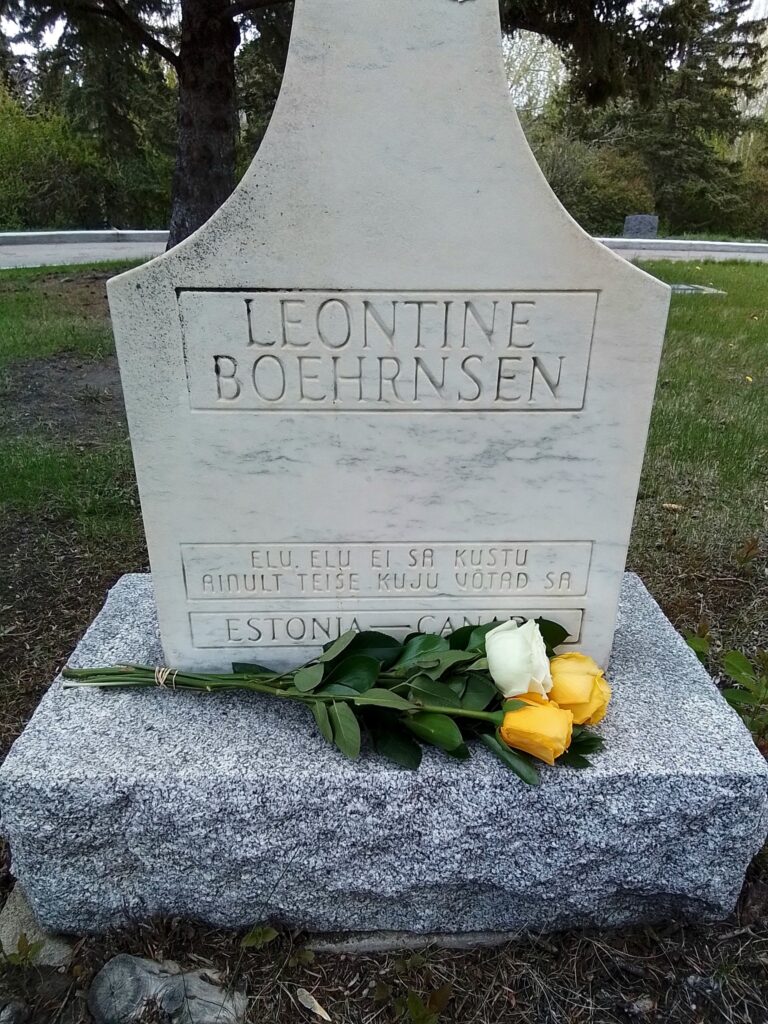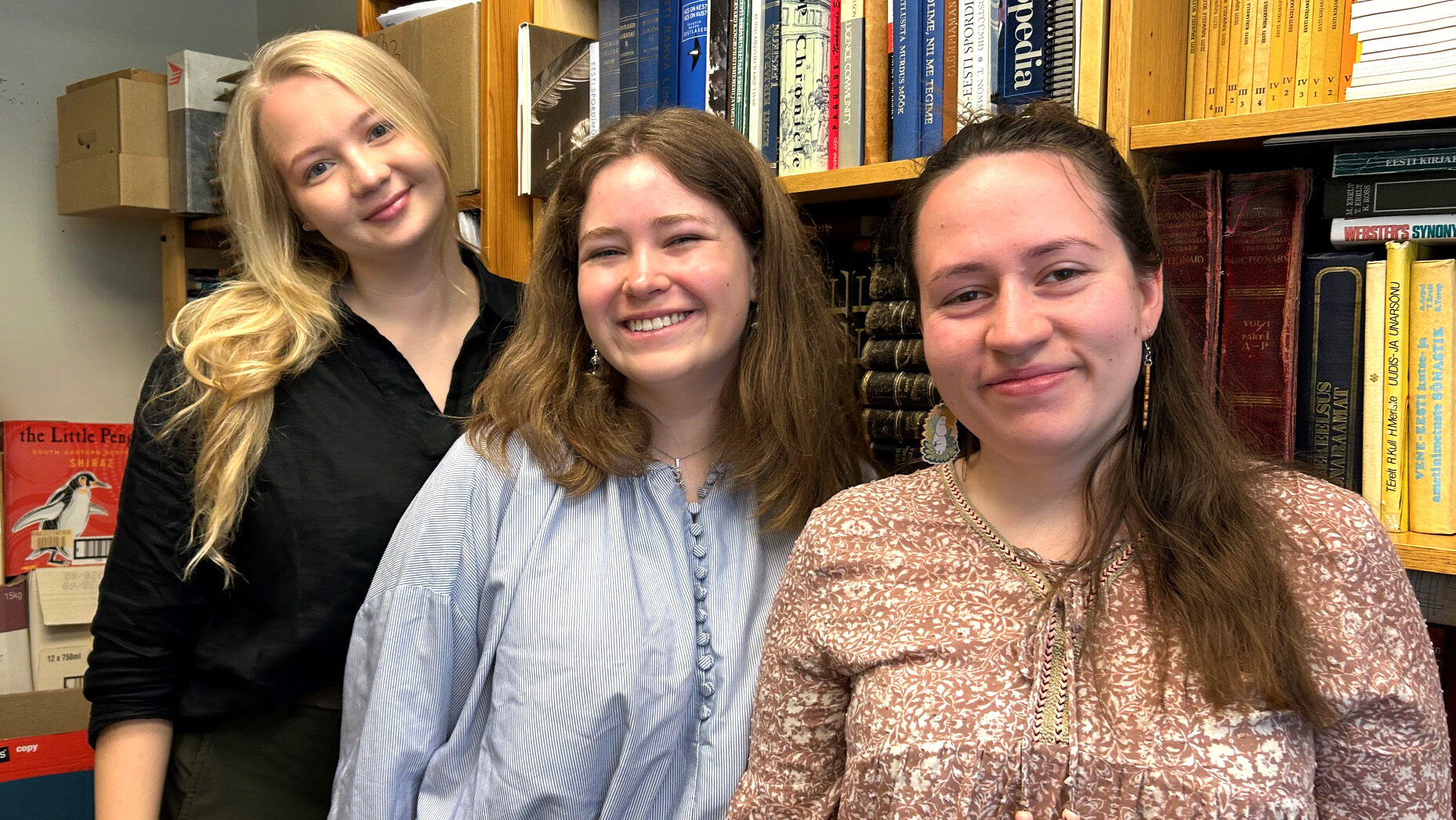Indeed, sometimes users of the internet really work to preserve history. This is what happened with a post in the Facebook group “Weird (and Wonderful) Secondhand Finds That Just Need To Be Shared)” made by a user in Calgary, Wes Rath, on May 17th, 2024. Having been posted again and again—including in February 2025—by different users after its first posting, members of this group have started calling it a “stolen post.”
What was this story people were so keen on stealing and claiming for themselves?
As Rath says, “At one of the local thrift stores last weekend, I spotted something that intrigued me… it was a hand-made ‘cardboard’ box, about 6” x 3-1/2”, and about 1-1/2” deep, with stamps and a couple of addresses on it. I spotted that the stamps were German, and the addresses written in German as well. I popped open the box to find a cat inside! Inside the box was a tiny cat figurine—a squeaky toy—nestled in a fabric bed made from an embroidered handkerchief. The initials “H.B.” were delicately stitched onto the cloth.


“At this point, it was like, yeah, cat’s coming home with me,” Rath wrote. His curiosity led him to research the box’s origins, and he soon discovered that the stamps dated back to 1932-1933. The package had been sent to a Mr. H.H. Böhrnsen in Tallinn, Estonia, from an unknown sender in Germany. Through extensive research, aided by members of the Facebook group, Rath pieced together a story about the Boehrnsen family [as the surname is spelled beyond the parcel]. The recipient of the package, Hans Heinrich Boehrnsen, lived with his mother, Leontine, and his sister, Sylvia, at the address in Tallinn. In 1941, the family left Estonia for Germany, where their father resided. The war years were cruel to them—Hans Heinrich died in 1942 at the age of nineteen, and Leontine divorced her husband that same year.
As war refugees, Leontine and Sylvia struggled to regain their Estonian citizenship after Estonia was occupied by the Soviet Union. Despite their repeated pleas to the International Refugee Organization in Geneva, no assistance came. In 1951, the two women made a life-altering decision: they immigrated to Canada, settling first in Brooks, Alberta, before eventually moving to Calgary.
Sylvia Boehrnsen, described as a fiercely independent and talented woman, became a skilled watercolour painter. Many of her paintings are held in both public and private collections. She never married, had no children, and passed away in February 2024 at the age of ninety-seven. It appears she had kept the tiny cat toy in its original box as a keepsake of her lost brother, Hans.
“I feel as a lover of history that I was meant to be the one to find this,” Rath reflected, “so that the history and her-story of this family could be kept alive, with the example of their resilience and willingness to find a way forward in what was in those times ‘a man's world.’ It has become a great example of independence and persistence by the Boehrnsens. And I’m glad to say that their family story has gained profound interest from people across the globe—from various places in Europe, Australia, South Africa, and across Canada and the US. Over 17,000 people from around the world have interacted with their story and the story of the cat-in-the-box at this point.”
As the story spread, more people stepped forward with connections to Sylvia Boehrnsen. Estonian-Canadian Rita Piil recalled how her friend, Eda Matiisen-McClung, passed the post along to Helgi Leesment, one of the founders of the Alberta Estonian Heritage Society. Leesment had met Sylvia years ago and interviewed her about her family’s treasured Estonian Bible, which had travelled with them from war-torn Europe to Canada. The Bible eventually found a permanent home in the Provincial Archives of Alberta. Leesment also assisted Sylvia in another personal mission—restoring her grandmother’s neglected grave in Estonia.
Back in Alberta, Wes Rath visited the grave of Leontine to pay his respects and leave roses for Hans, Leontine, and Sylvia.

Almost a year later, the small thrift store find has taken on a significance far beyond its modest appearance, with the story even getting picked up by the CBC. Rath considers himself the temporary custodian of the parcel and the family’s story until a proper home can be found. There have been several options, including the Tartu Mänguasjamuuseum (Tartu Toy Museum) who offered to add the find to their collection and keep it safe, Vabamu Museum of Occupations and Freedom, the Canadian Museum of Immigration at Pier 21, and VEMU Estonian Museum Canada. He is also waiting to hear back from the Alberta Estonian Heritage Society, where he would love to donate the parcel, as he understands that “Sylvia was a big supporter of the society and heavily involved. It would make sense to keep it in Alberta, their chosen home.”
Through the quirks of social media and the kindness of strangers, a simple cardboard box, a tiny squeaky cat, and the story of a refugee mother and daughter who rebuilt their lives in Canada continues to find its way into the conversations of people today.



